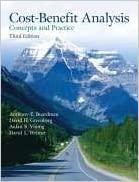Question
Punch Manufacturing Corporation owns 80 percent of the common shares of Short Retail Stores. The companies balance sheets as of December 31, 20X4, were as
Punch Manufacturing Corporation owns 80 percent of the common shares of Short Retail Stores. The companies balance sheets as of December 31, 20X4, were as follows:
| Punch Manufacturing | Short Retail Stores | ||
| Assets | |||
| Cash | 50,000 | 30,000 | |
| Accounts Receivable | 104,000 | 84,000 | |
| Inventory | 270,000 | 130,000 | |
| Land | 105,000 | 75,000 | |
| Buildings & Equipment | 510,000 | 300,000 | |
| Less: Accumulated Depreciation | (220,000) | (135,000) | |
| Investment in Short Retail Stores | 120,000 | ||
| Total Assets: | 939,000 | 484,000 | |
| Liabilities and Equity | |||
| Accounts Payable | 139,000 | 34,000 | |
| Bonds Payable | 250,000 | 200,000 | |
| Preferred Stock ($10 par value) | 200,000 | 100,000 | |
| Common Stock: | |||
| $10 par value | 150,000 | ||
| $5 par value | 100,000 | ||
| Retained Earnings | 200,000 | 50,000 | |
| Total Liabilities and Equity | 939,000 | 484,000 | |
Short Retails 8 percent preferred stock is convertible into 13,000 shares of common stock, and its 10 percent bonds are convertible into 8,000 shares of common stock. Short reported net income of $50,400 for 20X4 and paid dividends of $30,200. Punch Manufacturing has 11 percent preferred stock and 12 percent bonds outstanding, neither of which is convertible. Punch reported after-tax income, excluding investment income from Short, of $105,000 in 20X4 and paid dividends of $63,000. The companies file separate tax returns and are subject to a 40 percent income tax.
Required: Compute basic and diluted EPS for the consolidated entity. (Round your intermediate calculations and final answers to two decimal places.)
| Basic Earnings Per Share | |
| Diluted Earnings Per Share |
Step by Step Solution
There are 3 Steps involved in it
Step: 1

Get Instant Access to Expert-Tailored Solutions
See step-by-step solutions with expert insights and AI powered tools for academic success
Step: 2

Step: 3

Ace Your Homework with AI
Get the answers you need in no time with our AI-driven, step-by-step assistance
Get Started


